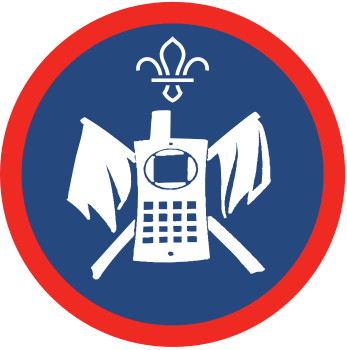Invitation innovation
You’ll need
- Pens or pencils
- A4 paper
- Tables
- Chairs
- Camera or phone
- Device to show photos, videos, or slides
- Access to the internet
- Smartphone or tablet, one per group
- Memory stick or flash drive
- Photo/video editing software, optional
Before you begin
- Plan for the use of photography and video in making the e-invite. Each young person in your group: will need consent from a parent or guardian to be in pictures and videos, will need to be comfortable being in pictures and videos and will need access to a smartphone, tablet and computer to create and edit pictures and videos. Look at the guidance on handling media and consent here.
- Check your calendar for an upcoming event that involves your group and people from other groups, and that everyone can get involved in. Contact other Section Team Leaders to make them aware that an e-invite containing pictures and video will be coming their way, and check if it’s okay for these to be shown to their young people. Prepare any additional editing software that’s needed. Make sure all devices being used for the activity are password-protected and accessible to adults for safeguarding purposes. Try to avoid using personal devices – if this is unavoidable, supervise their use throughout.
- Let everyone in the group know that they’ll be sending out an e-invite for the upcoming event in this session. Ask them to bring along any pictures they might have from Scouts that could be included, assuming there’s consent for them to be used. Set out the tech on tables for everyone to use in groups.
Run the activity
- Everyone should get into small groups with no more than six people. Each group should sit at a table and have at least one computer, smartphone or tablet.
Encourage everyone to share the tech as needed while they work.
- Explain that they’ll be putting together an e-invite for the upcoming event. The e-invite should contain pictures and video that have been edited. Give each group pens or pencils, paper and some time to come up with a design for their e-invite. Each e-invite needs to make the event seem exciting, while informing potential guests what they need to know (for example, when it is and what needs to be brought along).
Groups could do a mind-map to come up with ideas or sketches of different designs, before agreeing on the best one.
- When everyone’s happy with their design, each group should use the tech to take pictures and record video for their e-invite.
They should think about acting out scenarios from the event, take pictures of the venue and capture people enjoying themselves!
- Give everyone time to make edits and combine their media, using the relevant software.
- Pass the finished e-invites to the person leading the activity, so they can share them with other groups. Send the e-invite by email, video message or upload from a memory stick.
- Let everyone who featured in the e-invites know that they can have their images taken out of the pictures and video at any time. Make available contact details of the e-invite recipients so that these images can be removed as soon as possible when requested.
Reflection
Creating an invitation for an event with digital tools has several advantages. What do pictures and videos show us that words don’t? Was it easier to get across what the event will be like with these tools? Remember – a picture paints a thousand words.
Safety
All activities must be safely managed. You must complete a thorough risk assessment and take appropriate steps to reduce risk. Use the safety checklist to help you plan and risk assess your activity. Always get approval for the activity, and have suitable supervision and an InTouch process.
- Online safety
Supervise young people when they’re online and give them advice about staying safe. Take a look at our online safety or bullying guidance. The NSPCC offers more advice and guidance, too. If you want to know more about specific social networks and games, Childnet has information and safety tips for apps. You can also report anything that’s worried you online to the Child Exploitation and Online Protection Command. As always, if you’ve got concerns about a young person’s welfare, including their online experiences, follow the Yellow Card to make a report.
- Phones and cameras
Make sure parents and carers are aware and have given consent for photography.
- Music and films
Make sure music and films are age appropriate for the youngest person present.
More technical software/digital tools could make producing the e-invite more challenging, though the results could be more impressive.
Adjust device settings to make them suitable. Digital tools should be user-friendly and should produce images/text/video that gets across the message to those with both visual and aural impairments.
If anyone prefers not to appear in videos or images, make doubly sure that their image is removed.
All Scout activities should be inclusive and accessible.
Anyone interested in using digital tools may wish to experiment further with them by tackling the Digital Citizen Staged Activity Badge.
Let the groups decide what goes into their e-invite by choosing what photos to take and video to make. These should be edited independently too, though give assistance where necessary to help achieve the group’s aim.
